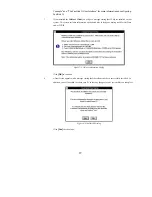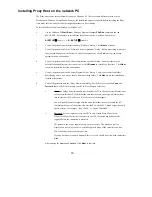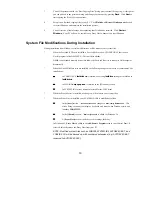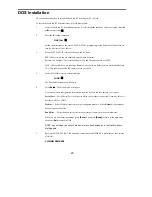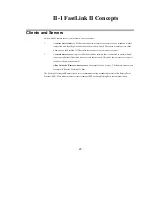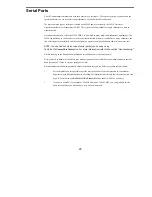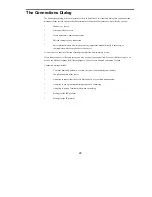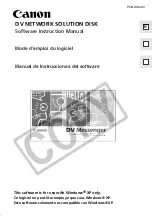
14
3
If you selected Novell TCP/IP Stack, this will install Novell’s LAN Workplace TCP/IP stack which
lets you run IP-based applications.
Note: IP applications such as a Web Browser, FTP client, email client, etc., are not
included with this package.
To use TCP/IP effectively you need to refer to a DNS (Domain Name System) server. DNS lets you
use symbolic names (such as xyz.company.com) instead of specific IP addresses.
A dialog similar to the following will now appear:
Figure 3: TCP/IP Domain Name System Configuration Dialog
You should now enter the following information:
Domain Name
—
the DNS domain name; each network uses a top-level domain name such as
company.com.
Primary DNS address
—
the IP address of the DNS name server that will be tried first to resolve
symbolic names; if this server is not available, then the secondary DNS address will be tried instead.
Secondary DNS address
—
the IP address of the DNS name server that will be tried if the primary
DNS address cannot be reached; if this server is not available, then the attempt to resolve the
symbolic name will fail. This parameter is optional, but it is strongly recommended.
4
You may be prompted to overwrite files such as NET.CFG and FLINK.INI that may have been
previously installed. For each of these prompts, answer
[Yes]
to overwrite the existing file, or
[No]
to keep the previous version. If you answer
[Yes]
, the file will be backed up.
The FastLink II files will now be copied to the destination directories.

















